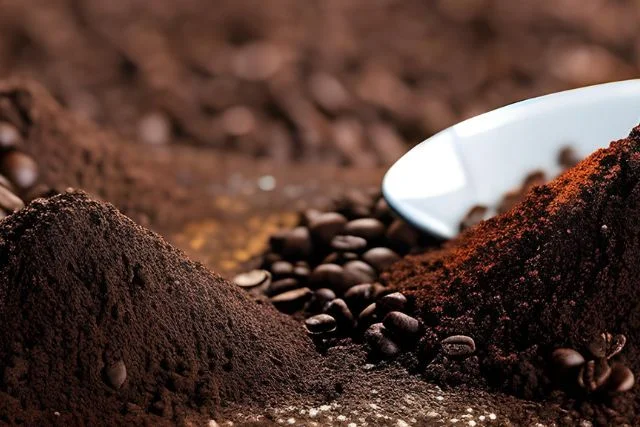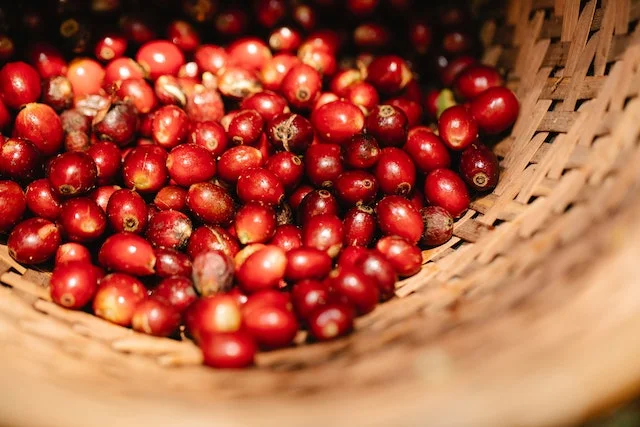Upcycling Coffee Byproducts: Sustainable Solutions for Your Morning Brew
Coffee is one of the world’s most beloved beverages. But behind every cup of coffee lies a trail of waste and environmental impact. The good news is that through upcycling, we can transform coffee byproducts into innovative new materials and products, supporting a circular economy. This post explores the exciting potential of upcycling coffee byproducts and how it can contribute to a greener, more sustainable coffee industry.
Introduction
The global coffee industry produces over 10 million tons of coffee beans each year. While this brings joy to coffee lovers worldwide, it also generates a tremendous amount of waste. The three main byproducts of coffee production are coffee grounds, coffee chaff, and coffee pulp. Unless properly managed, these byproducts can have detrimental environmental effects: from greenhouse gas emissions as they decompose to water contamination from improper disposal.
This is where the concept of upcycling comes in. Upcycling refers to the creative reuse of waste materials to create new products of higher value. By upcycling coffee byproducts into useful materials instead of discarding them, we can reduce environmental impacts and waste. The upcycling movement also presents new revenue opportunities for coffee producers and inspires innovative eco-solutions.
This post will provide an in-depth look at the different coffee industry byproducts and the ample opportunities to upcycle them. We’ll explore some of the pioneering initiatives working to scale up the sustainable use of coffee waste. We’ll also discuss the benefits and challenges of relying on upcycling to improve the coffee industry’s environmental footprint. Ultimately, our aim is to showcase the transformative potential of upcycling coffee byproducts and how you can get involved in building a greener coffee future.

Key Takeaways
- Coffee Industry Waste: The coffee industry generates significant waste, causing environmental problems like emissions and pollution.
- Upcycling for Sustainability: Upcycling coffee waste can reduce environmental impact and support a circular economy.
- Creative Uses for Coffee Byproducts: Coffee grounds have versatile applications, from skincare to eco-friendly products, while chaff and pulp also have potential uses.
- Benefits and Challenges: Upcycling offers environmental and economic benefits but requires technology, market demand, and sustainability considerations.
Coffee Byproducts: What Are They?
Before diving into upcycling solutions, let’s look at the main residual outputs of coffee processing that present utilization opportunities:
Overview of the different coffee byproducts
Coffee byproducts result from the multi-step process required to convert coffee cherries into roasted coffee beans ready for brewing. At each stage of processing, different organic materials are generated as waste. The three primary byproducts are:
- Coffee grounds: The dried grain-like particles left over after brewing coffee.
- Coffee chaff: The thin, papery skin peeled off coffee beans during roasting.
- Coffee pulp: The outer flesh removed from coffee cherries.
Common byproducts in coffee production
Some additional byproducts at various steps in coffee processing include wastewater, defective coffee beans, and spent coffee grounds from cafes and retail. While small in volume, these can still accumulate to pose disposal challenges.

Environmental challenges posed by coffee byproducts
When not managed properly, the organic matter in coffee byproducts can negatively impact the environment:
- Coffee grounds and pulp contribute to methane emissions as they decompose. Methane is a potent greenhouse gas.
- Dumping coffee pulp near water bodies leads to water pollution which can harm aquatic life.
- Coffee grounds disposed of in landfills contribute to landfill methane. Landfills are already the third largest source of methane in the US.
This highlights the importance of sustainably utilizing coffee production waste rather than sending it to landfills. Upcycling provides an avenue to transform these byproducts from an environmental burden into economic and ecological benefits.
Creative Ways to Upcycle Coffee Grounds
As a universally available byproduct of both coffee production and consumption, coffee grounds present diverse upcycling possibilities. Let’s look at some innovative applications for spent grounds.
DIY ideas for reusing coffee grounds at home
Many simple upcycling solutions allow households to reduce their coffee waste footprint:
- Coffee ground scrub: Exfoliate and hydrate skin with a coffee scrub made by mixing used grounds with coconut oil. The gritty texture sloughs off dead skin cells.
- Odor neutralizer: Stale coffee grounds absorb unpleasant smells. Place them in your fridge, shoes, or garbage bins to deodorize.
- Gardening fertilizer: Used coffee grounds contain nutrients like nitrogen that can improve soil health and boost plant growth when mixed into compost piles or sprinkled around plants.
Commercial products made from coffee grounds
Coffee grounds are also being upcycled on an industrial scale into eco-conscious commercial goods:
- Coffee-based candles: Companies like Boy Smells and Coffee By Candlelight craft aromatic soy candles using upcycled coffee grounds.
- Coffee-infused skincare: Beauty brands like Frank Body and Bean Body Care create body scrubs and soaps containing antioxidant-rich used coffee grounds.
- Coffee ground textiles: Fabrics made from recycled coffee grounds, coffee yarns, and dyes are gaining popularity. These innovative textiles reduce waste in the fashion industry.
The diverse applications for repurposing coffee grounds showcase how a simple lingering byproduct can foster both small-scale DIY solutions and scalable manufacturing innovations.

Coffee Chaff: From Waste to Resource
Coffee chaff, the paper-like outer cover discarded during roasting, is another byproduct offering green possibilities.
Exploring the potential of coffee chaff
Around 5% by weight of green coffee beans transforms into chaff during roasting. Though not detrimental like greenhouse gases, accumulating piles of chaff contribute to clogging landfills. However, researchers are uncovering innovative ways to upcycle this benign material.
Applications of coffee chaff
Here are some promising applications being developed for giving new life to coffee chaff:
- Use as mulch: Coffee chaff mixed into mulch provides a nutrient boost. Its light structure also retains moisture and suppresses weeds.
- Coffee chaff in animal feed: Several studies have found incorporating coffee chaff as a partial ingredient in cattle feed provides health benefits for livestock.
- Coffee chaff as a fuel source: As an organic material, compressed chaff can be burned directly for heat or converted into fuel pellets. Chaff can also be used in biomass power generation.
Repurposing coffee chaff transforms it from just another waste burden to a sustainable and economical asset for farmers, households, and renewable energy production.
The Transformation of Coffee Pulp
One of the most voluminous byproducts, the fruit flesh or pulp from processed coffee cherries, also offers abundant upcycling potential.

Understanding coffee pulp and its environmental impact
Up to 45% of a coffee cherry’s weight comes from the outer pulp which has to be removed before processing the bean. Around 8 million tons of coffee pulp are produced globally each year (Indonesia produces over 1.3 million tons alone). Much of this gets discarded into water channels or left to rot on plantations, creating greenhouse gases and contamination.
Innovative ways to upcycle coffee pulp
Researchers are continuously uncovering new processes for converting coffee pulp into green materials instead of waste:
- Coffee pulp compost: Coffee pulp can be composted and used as a natural fertilizer, returning nutrients to the soil. Vermicomposting with worms boosts its quality.
- Coffee pulp paper: Naturally occurring cellulose allows coffee pulp to be used in making recycled paper products. This provides a sustainable paper source.
- Coffee pulp biofuel: Through techniques like anaerobic digestion, coffee pulp can be converted into methane gas for heating and electricity generation.
These solutions demonstrate how a problematic waste material like coffee fruit pulp can transform into a wide range of usable byproducts through the wonder of upcycling innovation.
Initiatives and Companies Leading the Upcycling Efforts
Across the coffee sector, impact-driven businesses and nonprofits are pioneering projects to scale up the upcycling of coffee byproducts.
Highlighting businesses and organizations committed to sustainable coffee byproduct utilization
Here are some leaders driving forward innovative and eco-friendly uses for coffee waste:
- Coffee grounds recycling programs: Initiatives like Ground to Ground collect used grounds from cafes and community sites and provide them to gardeners and urban farms as fertilizer.
- Coffee chaff collaborations with local farms: Some coffee roasters work with nearby livestock farms to provide them with chaff for animal bedding and feed. This diverts waste from landfills.
- Coffee pulp conversion startups: Companies like The Coffee Cherry Co, Pulp Pantry, and RecyclePoints convert tons of coffee pulp into compost. Others create pulp-based paper products.

Case studies showcasing successful upcycling projects
Specific cases further demonstrate the promise and real-world viability of repurposing coffee byproducts:
- Kaffeeform in Germany recycles old coffee grounds into stylish reusable coffee cups and designer homeware, tackling consumption waste.
- In Honduras, Cafe Solar helps coffee farms build biodigesters that convert coffee pulp into biogas for electricity. This also eliminates contamination of water bodies.
Such examples provide models for transforming coffee waste into resources in a socially, economically, and environmentally sustainable manner.
Benefits of Upcycling Coffee Byproducts
Scaling up the upcycling of coffee byproducts beyond niche projects to an industry-wide practice can yield multiple advantages:
Environmental advantages
- Alleviates the environmental damage of untreated coffee byproduct disposal
- Reduces methane and other emissions from decomposition and landfilling
- Provides a renewable source for products like biofuels and biomaterials
Economic benefits for coffee producers
- Creates additional revenue streams by selling byproducts to upcycling companies
- Lowers waste disposal costs
- May reduce farm expenses through on-site uses like organic fertilizer
Positive impact on local communities
- Stimulates innovation and green job creation through upcycling enterprises
- Offers sources of affordable ecosystem services and products like cleaner cooking fuel
- Improves local environmental conditions and health outcomes
Challenges and Considerations
While upcycling coffee byproducts offers many benefits, there are some limitations and considerations to address:

Addressing potential limitations of upcycling
- Requires access to upcycling technologies which can have high upfront costs
- Limited local demand for upcycled goods may restrict markets
- Complicated logistics of aggregating and transporting large volumes of waste
Balancing upcycling efforts with traditional waste management practices
- Upcycling is not a silver bullet solution – composting and biogas systems still play an important role
- Upcycling companies must ensure they utilize waste that would otherwise go untreated
- The danger of over-extracting waste resources from farms and communities
Ensuring sustainability throughout the supply chain
- Upcycling must deliver a positive impact across social, economic, and ecological parameters
- Cradle-to-cradle life cycle assessments allow holistic evaluation of upcycling processes
- Companies should commit to transparency and ethical conduct
How You Can Get Involved
You don’t have to be an industry expert to contribute towards scaling up coffee byproduct upcycling. Here are two easy ways to make a difference as an individual:
Simple ways for individuals to contribute to coffee byproduct upcycling
- Ask your local café to implement a coffee ground recycling program if they haven’t already
- Compost your own coffee grounds at home or donate them to community gardens
- Support crowdfunding campaigns to help new upcycling enterprises get started

Supporting sustainable coffee brands and initiatives
- Prefer coffee roasters who partner with farms on agricultural waste management
- Choose coffee packaging made from compostable/recycled materials
- Donate to nonprofits working to improve coffee sustainability like Coffee Kids
Voting with your wallet encourages the spread of sustainable coffee production and consumption practices, including upcycling.
Conclusion
With millions of tons of waste generated each year, the coffee industry is ripe for an upcycling revolution. As we have explored here, the three main byproducts – coffee grounds, coffee chaff and coffee pulp – can all be creatively repurposed into valuable new materials through upcycling.
Pioneering companies and community initiatives are proving the environmental and socio-economic promise of scaling up coffee byproduct upcycling. By supporting their efforts as conscious consumers and citizens, we can accelerate the transition to a circular coffee economy. With commitment and innovation, the local cafes and global coffeehouses that give us so much joy can become bastions of sustainability.








